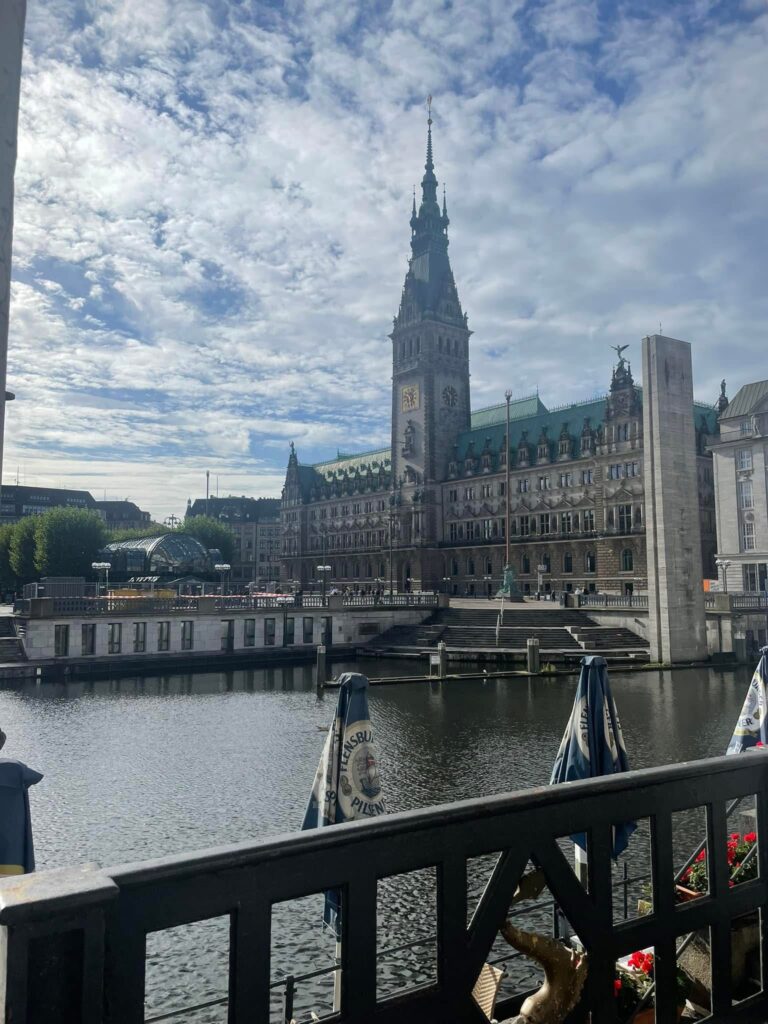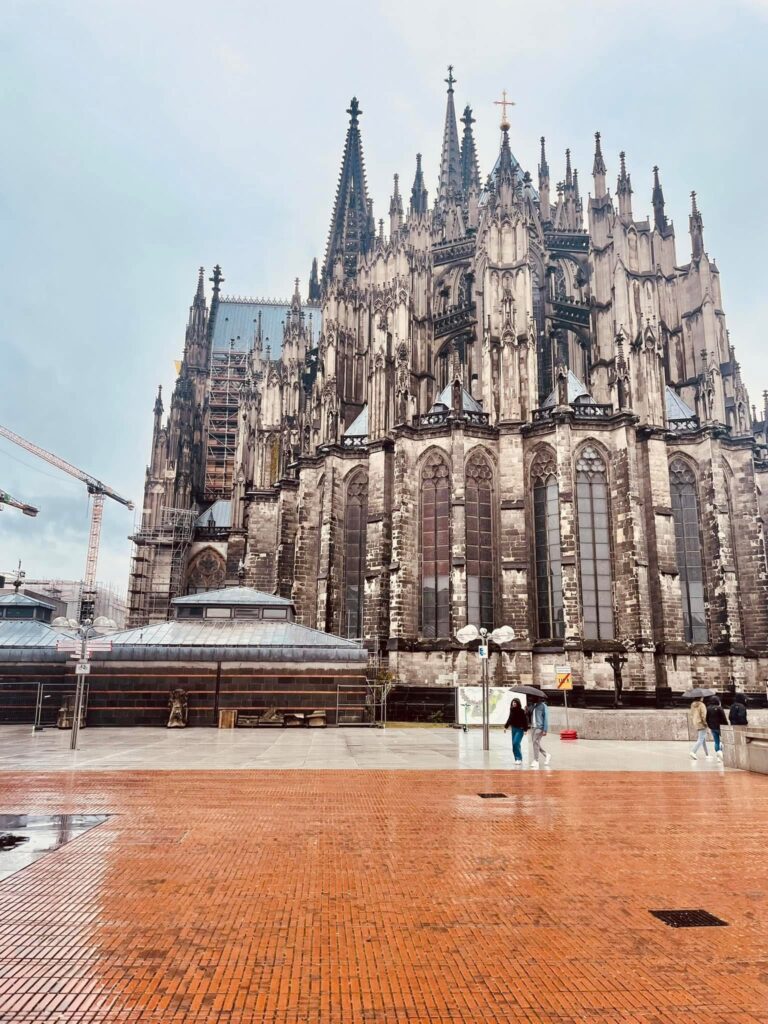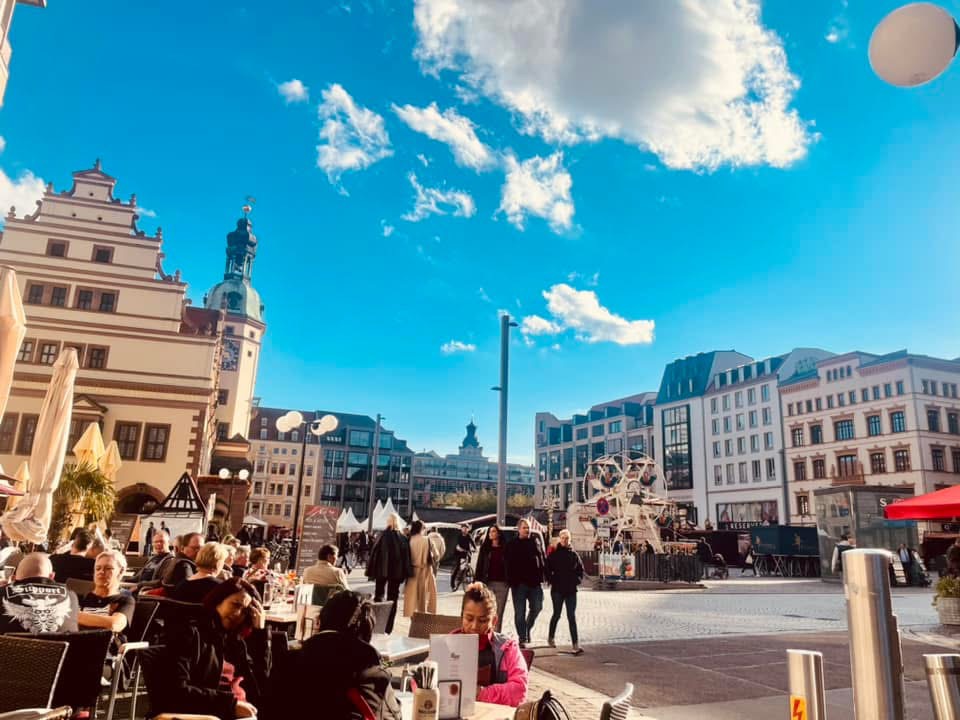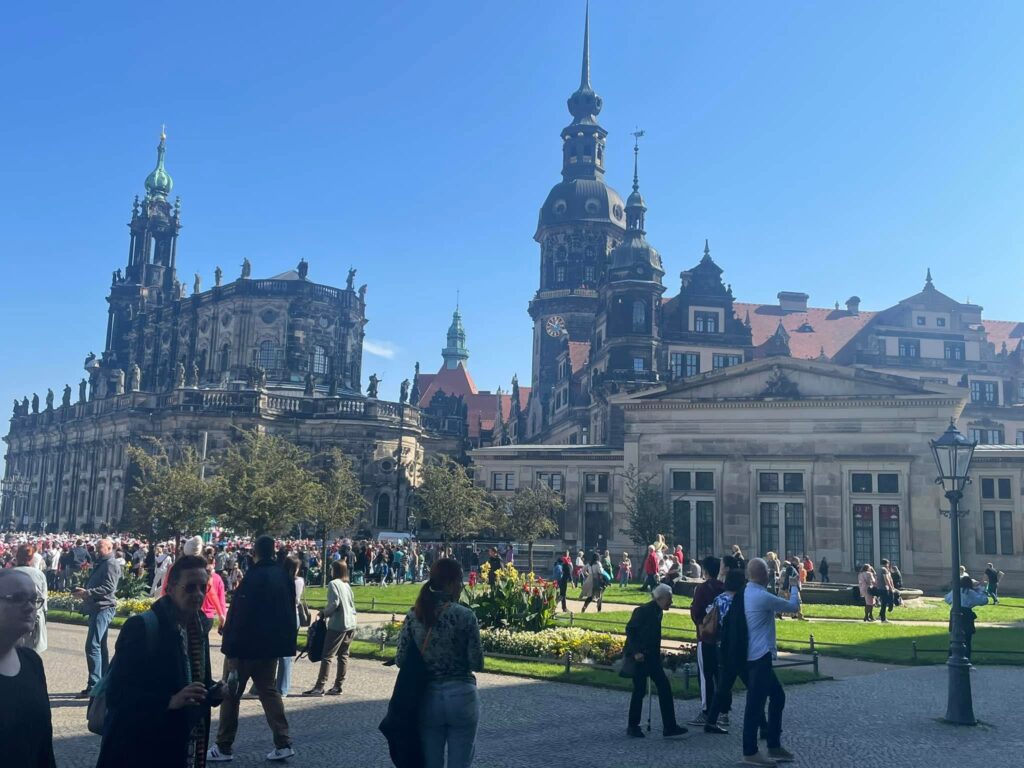When I tell clients they should explore Germany by train, I usually get puzzled looks. “But isn’t renting a car more flexible?” they ask. “What about the autobahn experience?” Here’s what I’ve learned after years of planning German rail journeys and experiencing the country’s incredible train system firsthand: traveling Germany by rail isn’t just transportation—it’s one of the world’s great travel experiences.
Germany’s rail network is a masterpiece of engineering and efficiency that connects every corner of the country with punctual, comfortable, and surprisingly scenic routes. But more than that, train travel in Germany offers something you can’t get from flying or driving: the ability to truly experience the journey while moving seamlessly between some of Europe’s most fascinating cities.
After planning dozens of German rail adventures and taking my own unforgettable train journey through the country, I can tell you that Germany by rail has completely changed how I think about European travel. Let me share why this might be the perfect way to explore Germany, and how to plan your own ultimate German train adventure.
Why Germany by Rail is Travel at Its Best
Germany’s relationship with rail travel is unlike anywhere else in the world. This isn’t just about getting from Point A to Point B—it’s about experiencing a country that has perfected the art of train travel over more than 180 years.
The efficiency factor: German trains are legendary for their punctuality and comfort. The Deutsche Bahn (DB) network connects over 5,400 stations across the country, with high-speed ICE trains reaching speeds of 200 mph. But what impressed me most wasn’t the speed—it was the seamless integration between different types of trains, from local S-Bahn services to international connections.
Scenic revelations: What surprised me most about German rail travel was how incredibly scenic the routes are. The journey becomes part of the destination as you pass through the Rhine Valley’s vineyard-covered hills, Bavaria’s fairy-tale landscapes, and the former East Germany’s surprising beauty. I found myself looking forward to the train rides as much as the destinations.
Cultural immersion: Train travel gives you a front-row seat to German daily life. You’ll see how Germans actually live—their efficient suburbs, their relationship with nature, their quiet dignity. It’s cultural observation that’s impossible from 30,000 feet or behind a car windshield.
Environmental consciousness: Germans take environmental responsibility seriously, and train travel reflects this. The rail network runs largely on renewable energy, making it one of the most sustainable ways to explore the country. Many German travelers choose trains over planes for environmental reasons, and you’ll be part of that cultural movement.
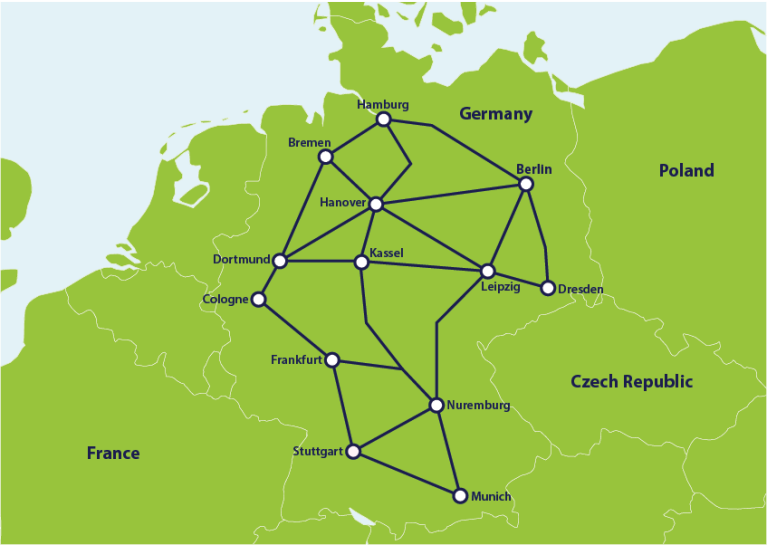
My Ultimate German Rail Journey: Berlin to Munich via Hidden Gems
Let me take you on the route I now recommend to clients who want to experience the best of Germany by rail—a journey that covers the country’s diversity while showcasing why train travel makes it all possible.
Day 1-3: Berlin – The Dynamic Capital
Berlin is the perfect starting point for a German rail adventure. The city’s incredible public transportation system—U-Bahn, S-Bahn, trams, and buses—prepares you for the efficiency you’ll experience throughout the country.
Why Berlin works: The city’s central location makes it an ideal hub for rail connections throughout Germany. But more importantly, Berlin’s complexity and energy create the perfect contrast to the other cities you’ll visit.
Rail highlight: Berlin’s train stations are destinations themselves. The Hauptbahnhof (Central Station) is a glass cathedral of modern architecture that makes arriving or departing feel like an event. Watching the efficient choreography of passengers and trains, you understand why Germans are so proud of their rail system.
Cultural discovery: I spent my Berlin time exploring neighborhoods by S-Bahn—from the trendy Prenzlauer Berg to the historic Mitte district. Each S-Bahn stop revealed different aspects of Berlin’s personality, preparing me for the regional diversity I’d experience on longer train journeys.
Day 4-5: Dresden – The Phoenix City (2 hours from Berlin)
The train journey from Berlin to Dresden is your introduction to eastern Germany’s surprising beauty. The ICE train glides through countryside that’s both pastoral and historically significant—you’re traveling through landscapes that were behind the Iron Curtain for 40 years.
The journey: What struck me most was how quickly the scenery changed from Berlin’s urban sprawl to the rolling hills of Saxony. The train’s large windows and comfortable seats made the two-hour journey feel like a scenic tour rather than mere transportation.
Arrival magic: Dresden’s Hauptbahnhof sits just across the Elbe River from the baroque old town. The short walk from the station to the city center, with the reconstructed skyline growing larger with each step, creates an incredible sense of arrival that you simply can’t get from flying.
Local insight: Dresden’s tram system is part of the rail experience—these historic streetcars connect seamlessly with the national rail network, making it easy to explore the city without ever needing a car.
Day 6-7: Nuremberg – Medieval Meets Modern (3 hours from Dresden)
The route from Dresden to Nuremberg takes you through some of Germany’s most beautiful countryside. The train follows river valleys and passes through small towns that look like they haven’t changed in centuries.
Scenic surprise: The journey through the Bavarian Forest region was unexpectedly gorgeous. Rolling hills covered in dark forests, medieval villages with church spires, and the gradual transition from northern German landscapes to Bavarian countryside—it was like watching a movie of German geography.
Historical significance: Traveling this route by train, you’re following paths that have connected German cities for over a century. The rail lines themselves are part of German history, and you can feel the significance of the connections between these cities.
Station architecture: Nuremberg’s station is a perfect example of how German rail stations balance historical significance with modern functionality. The building itself tells the story of the city’s evolution from medieval trade center to modern transportation hub.
Day 8-9: Rothenburg ob der Tauber – Fairy Tale Detour (1 hour from Nuremberg)
This is where German rail travel shows its flexibility. Rothenburg isn’t on the main rail lines, but the regional train connection from Nuremberg makes it accessible as a perfect day trip or overnight adventure.
The regional rail experience: The smaller trains that serve routes like Nuremberg to Rothenburg are different from the high-speed ICE trains, but they’re equally charming. You’ll share the train with local commuters, students, and other travelers, creating a more intimate travel experience.
Landscape transition: The short journey to Rothenburg takes you through the heart of Franconia, with its distinctive red-roofed villages and vineyard-covered hills. It’s fairy-tale Germany at its most authentic, and experiencing it by train makes you feel like you’re part of a European travel tradition.
Small-town stations: Rothenburg’s tiny station is a reminder that German efficiency extends to even the smallest towns. The connection back to major rail lines is seamless, showing how the entire country is connected by this incredible network.
Day 10-11: Munich – Bavarian Sophistication (2.5 hours from Nuremberg)
The final leg of the journey takes you into the heart of Bavaria, with the Alps visible on the horizon as you approach Munich. This is one of Germany’s most scenic rail routes, and the perfect finale to a German rail adventure.
Alpine approach: As the train approaches Munich, the landscape becomes increasingly dramatic. The flat northern plains give way to rolling hills, then the Alps appear on the southern horizon. It’s a geographical transition that perfectly captures Germany’s diversity.
Arrival in Bavaria: Munich’s Hauptbahnhof is one of Europe’s great train stations—a soaring glass and steel structure that handles over 450,000 passengers daily. But what impressed me most was how efficiently it connects to the city’s excellent U-Bahn and S-Bahn networks.
Cultural culmination: Munich represents the perfect ending to a German rail journey. The city’s blend of traditional Bavarian culture and modern sophistication, all easily accessible by public transportation, shows how German cities have mastered the balance between preserving tradition and embracing progress.
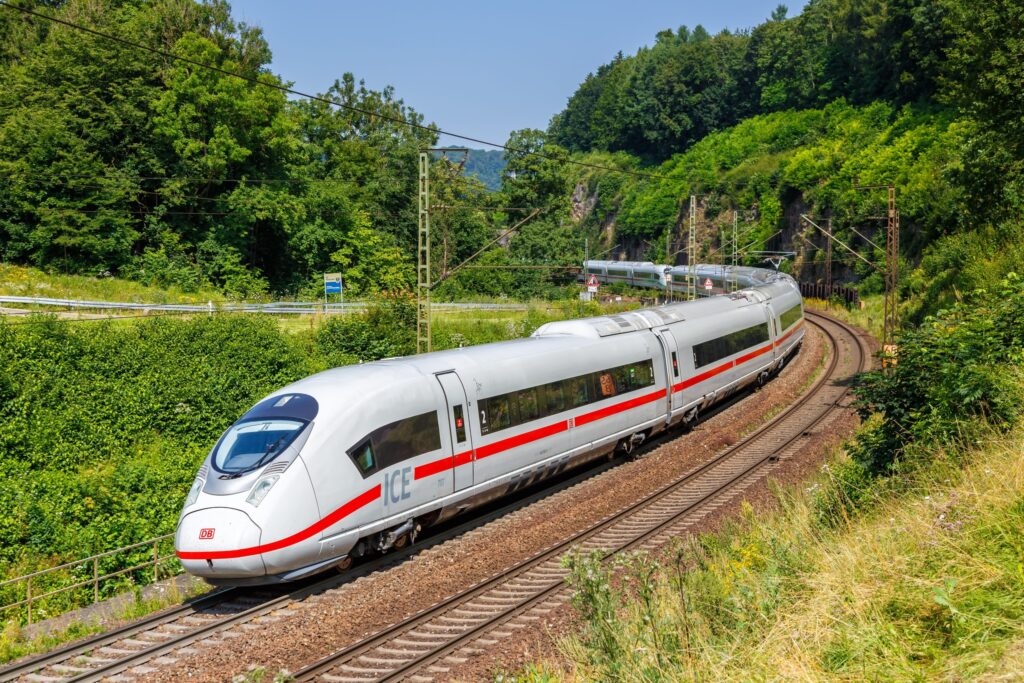
How to Plan Your German Rail Adventure: The Essential Guide
Planning a German rail journey requires different thinking than typical European travel. Here’s what you need to know to create your perfect German train adventure:
1. Understanding the German Rail System
Deutsche Bahn (DB): Germany’s national railway operates most services, from high-speed ICE trains to regional connections. The DB Navigator app is essential for planning and booking.
Train Types:
- ICE (InterCity Express): High-speed trains connecting major cities
- IC (InterCity): Comfortable long-distance trains serving smaller cities
- RE (Regional Express): Regional trains connecting smaller towns
- S-Bahn: Urban rail networks in major cities
Booking strategy: Unlike airlines, German trains don’t overbook. Your reserved seat is guaranteed, and the trains almost always run on time. Book early for better prices, especially for longer routes.
2. Pass vs. Point-to-Point Tickets
German Rail Pass:
- Unlimited travel for 3-15 consecutive days
- Covers all DB trains including ICE
- Best value for extensive travel
- Includes many regional transportation networks
Eurail Pass:
- Covers multiple countries including Germany
- Flexible travel dates
- Higher cost but more geographic coverage
- Good for multi-country trips
Point-to-Point Tickets:
- Cheaper for limited travel
- Advance booking discounts available
- More flexibility in timing
- Better for focused itineraries
My recommendation: For a dedicated German rail adventure of 7+ days, the German Rail Pass offers the best value and maximum flexibility.
3. Seat Reservations and Comfort Classes
First Class vs. Second Class:
- First class offers more space and complimentary beverages
- Second class is comfortable and adequate for most travelers
- Price difference is usually 50-100% more for first class
- Consider first class for longer journeys (3+ hours)
Seat Reservations:
- Optional but recommended for longer routes
- Guaranteed seat even on crowded trains
- Small additional fee but worth the peace of mind
- Essential during peak travel times
4. Luggage and Practical Considerations
Luggage strategy: German trains have limited luggage space. Pack light and use wheeled bags that fit in overhead racks. Unlike airlines, there are no weight restrictions, but space is limited.
Connectivity: Most ICE trains offer free Wi-Fi, though quality varies. Regional trains may not have Wi-Fi, so download entertainment and maps beforehand.
Food service: ICE trains have restaurant cars with surprisingly good food. Regional trains may have limited service, so consider bringing snacks for longer journeys.
Regional Rail Highlights: Beyond the Main Routes
One of the best aspects of German rail travel is the ability to explore regional routes that showcase the country’s diversity:
The Rhine Valley Route
Frankfurt to Basel: One of the world’s most scenic train routes, following the Rhine River through castle-studded landscapes and vineyard-covered hills.
What makes it special: The two-hour journey passes dozens of medieval castles, charming wine villages, and the famous Loreley Rock. It’s like taking a cruise without leaving the train.
The Bavarian Alps Route
Munich to Garmisch-Partenkirchen: A dramatic journey into the heart of the Bavarian Alps, with stunning mountain views and traditional Alpine villages.
Perfect for: Outdoor enthusiasts and anyone wanting to experience Germany’s mountain culture. The route continues to Austria, making it perfect for multi-country adventures.
The Baltic Coast Route
Hamburg to Rostock: A lesser-known route that showcases northern Germany’s maritime culture and beautiful coastal landscapes.
Hidden gem: This route takes you through the Mecklenburg Lake District, one of Germany’s most beautiful and least-visited regions.
The Black Forest Route
Stuttgart to Konstanz: Winding through the Black Forest, this route offers dense woodlands, traditional villages, and views of Lake Constance.
Cultural experience: The route passes through regions famous for cuckoo clocks, traditional crafts, and some of Germany’s best hiking trails.
The Social Aspect of German Rail Travel
One of the most rewarding aspects of German rail travel is the social experience. Train travel creates opportunities for cultural exchange that you simply can’t get from flying or driving:
Observation opportunities: Germans are efficient but not unfriendly. Train travel gives you chances to observe daily German life—how families travel together, how business people work on trains, how students navigate the system.
Conversation possibilities: Longer train journeys often lead to conversations with fellow travelers. Germans are generally well-educated and curious about international visitors, leading to fascinating cultural exchanges.
Shared experiences: When delays occur (rare but not impossible), Germans handle them with characteristic efficiency and humor. These moments often create memorable interactions with fellow passengers.
German Rail Travel: Common Mistakes to Avoid
After years of planning German rail journeys, I’ve seen clients make the same mistakes repeatedly. Here’s how to avoid them:
Mistake 1: Underestimating journey times While German trains are fast, the country is larger than many realize. Berlin to Munich takes 4+ hours. Plan accordingly and don’t overschedule.
Mistake 2: Ignoring regional transportation German cities have excellent public transportation that’s often included with rail passes. Don’t assume you need taxis or rental cars for city exploration.
Mistake 3: Booking inflexible tickets While advance booking saves money, it reduces flexibility. Consider flexible tickets or rail passes if your schedule might change.
Mistake 4: Packing too much Train luggage space is limited. Pack light and use bags that fit in overhead racks. Heavy bags make station navigation difficult.
Mistake 5: Not learning basic German phrases While many Germans speak English, learning basic phrases for train travel shows respect and makes interactions smoother.
The Investment: What German Rail Travel Actually Costs
German rail travel pricing is transparent and predictable, unlike airline pricing. Here’s what to expect:
German Rail Pass (7 days):
- Second Class: €270-320 per person
- First Class: €350-420 per person
- Covers all DB trains including ICE
- Includes many regional transportation networks
Point-to-Point Examples:
- Berlin to Munich: €35-150 depending on booking time and class
- Frankfurt to Cologne: €25-80
- Hamburg to Dresden: €30-90
Additional Costs:
- Seat reservations: €4.50 per journey
- Meals: €15-25 for restaurant car meals
- Regional transportation: Often included with rail passes
Money-saving tips:
- Book early for advance purchase discounts
- Consider rail passes for extensive travel
- Take advantage of included regional transportation
- Pack snacks for shorter journeys
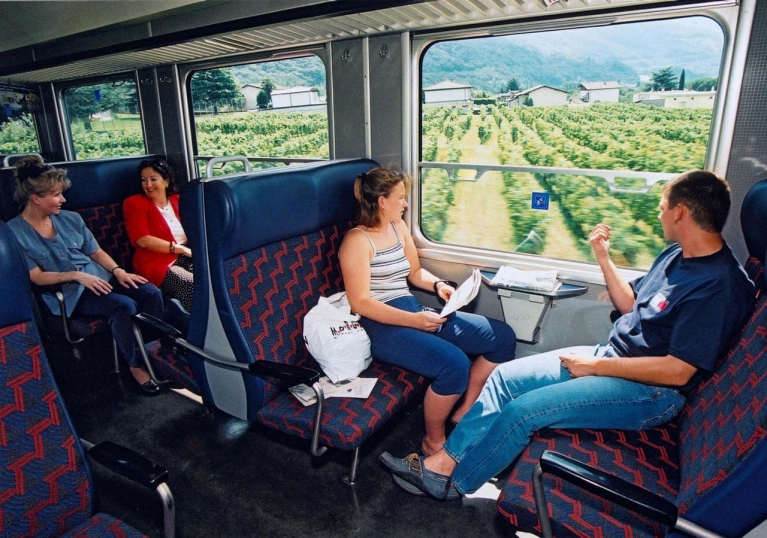
Why German Rail Travel is Perfect for Different Types of Travelers
First-time Europe visitors: German efficiency and infrastructure make it perfect for building confidence in European travel.
History enthusiasts: Train routes connect historical sites and allow you to experience the geography of German history.
Architecture lovers: German train stations are architectural marvels, and the journey between cities showcases diverse regional architecture.
Environmental travelers: German trains run largely on renewable energy, making them one of the most sustainable ways to explore Europe.
Photography enthusiasts: Large windows and scenic routes provide constant photo opportunities impossible from planes or busy highways.
Multi-generational families: Comfortable seating, bathroom facilities, and the ability to move around make trains ideal for traveling with children or elderly relatives.
The Cultural Impact: How Rail Travel Changes Your German Experience
Traveling Germany by rail does more than just get you from city to city—it fundamentally changes how you experience the country:
Pace of travel: Train travel forces you to slow down and observe. You’ll notice details about German landscape, architecture, and daily life that you’d miss from a plane window.
Environmental awareness: Using Germany’s efficient public transportation system connects you to German values of environmental responsibility and efficient resource use.
Social integration: You’ll share space with German commuters, families, and travelers, creating a more authentic cultural experience than tourist-focused transportation.
Historical perspective: Many German rail routes follow historical trade and military routes, giving you a geographic understanding of German history that enhances your city experiences.
Planning Your German Rail Adventure: The Professional Advantage
While German rail travel is accessible to independent travelers, professional planning can transform a good trip into an extraordinary adventure:
Route optimization: Connecting the right cities in the right order, with optimal journey times and connections, requires local knowledge and experience.
Accommodation strategy: Choosing hotels near train stations vs. city centers can dramatically affect your experience and convenience.
Cultural timing: Knowing when regional festivals, markets, and cultural events occur can add incredible richness to your journey.
Backup planning: Understanding alternative routes and connections ensures your trip continues smoothly even if unexpected changes occur.
Ready to Experience Germany by Rail?
Germany by rail offers something for every type of traveler—efficiency enthusiasts, cultural explorers, environmental travelers, and anyone who appreciates the journey as much as the destination. But the key to a perfect German rail adventure is understanding how to maximize the system’s incredible capabilities while creating an itinerary that matches your interests and travel style.
After years of planning German rail journeys and experiencing the magic of train travel through this incredible country, I can tell you that this isn’t just about transportation—it’s about experiencing Germany the way Germans do, with efficiency, comfort, and respect for the environment and each other.
The German rail network has a way of changing your perspective on travel itself. Many clients tell me their German rail adventure was the trip that made them fall in love with train travel and showed them a completely different way to experience Europe.
When you’re ready to explore Germany at ground level, watching the countryside unfold from comfortable seats while moving efficiently between fascinating cities, let’s talk about creating your perfect German rail adventure.
🌐 Website:
https://www.vincentvacations.com/agents/gretchenode/travelform
Ready to discover Germany by rail? Contact me today to start planning your ultimate German train journey!

